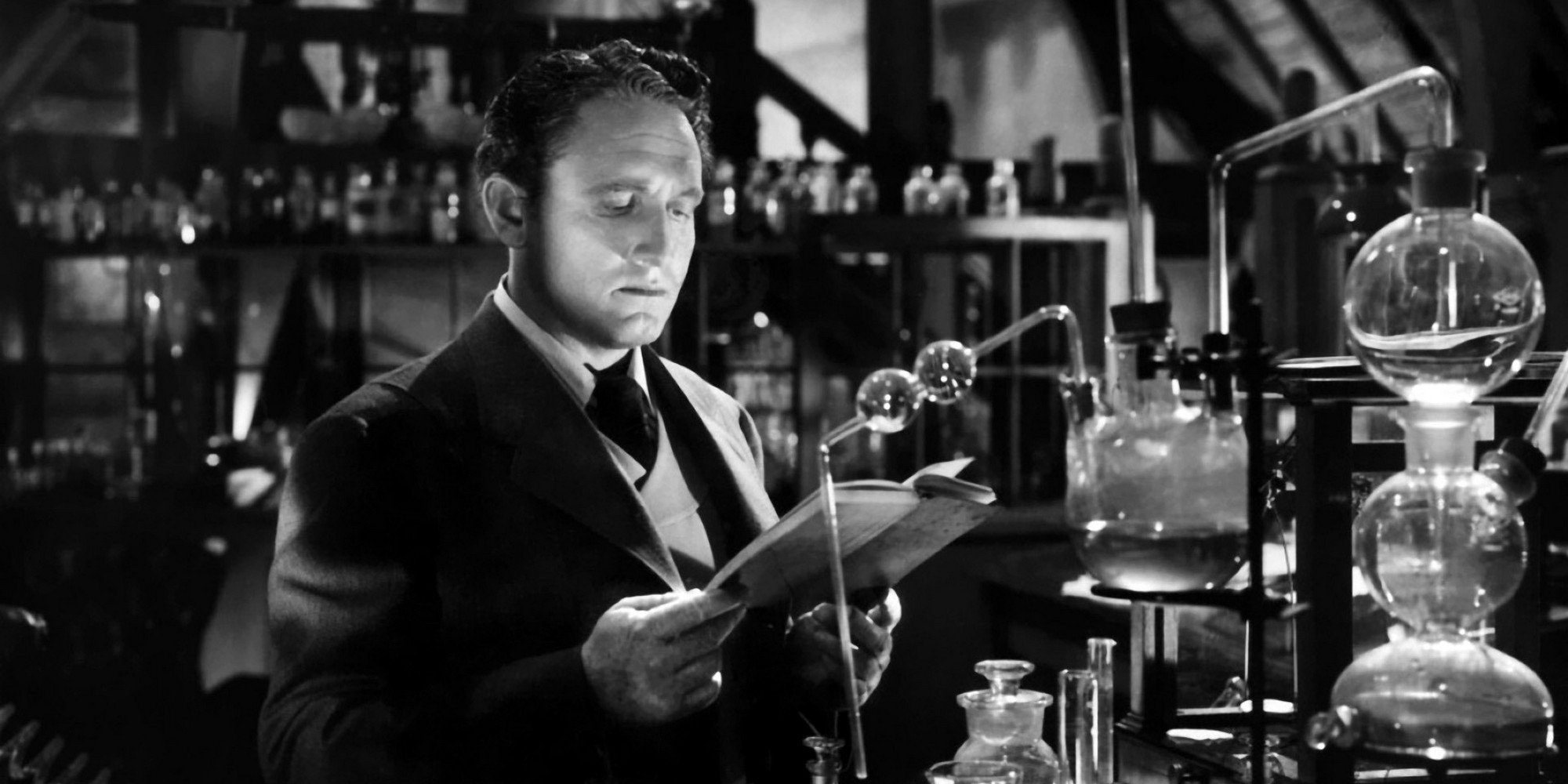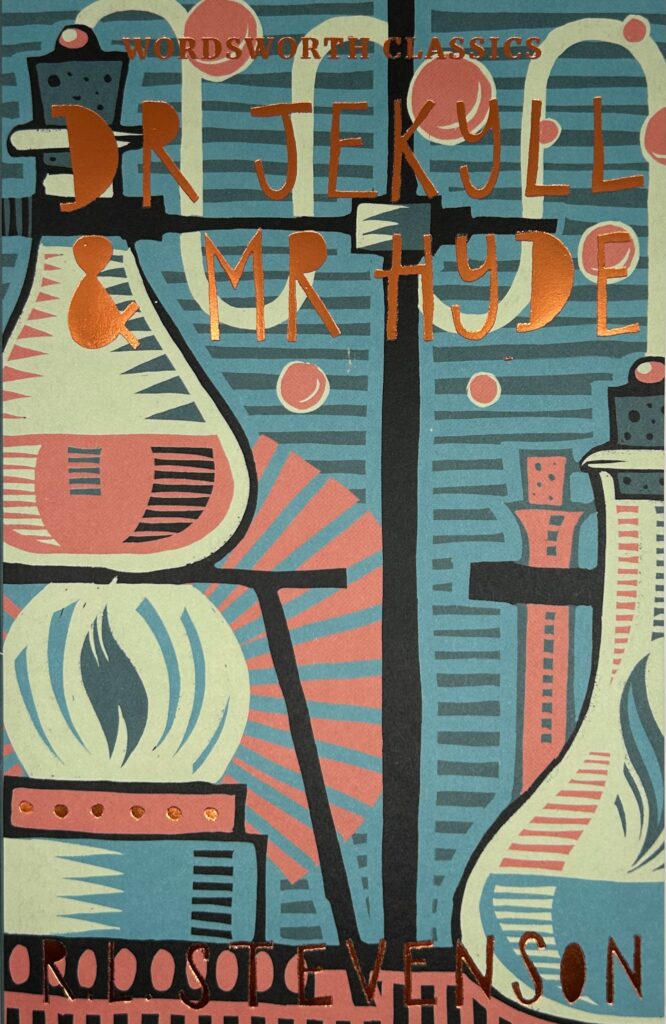
The Strange Case of Dr Jekyll and Mr Hyde
David Stuart Davies looks at a title that has been one our best sellers over the last year, ‘The Strange Case of Dr Jekyll and Mr Hyde’.
‘Yes, I had gone to bed Henry Jekyll, I had awakened Edward Hyde. How was this to be explained? I asked myself; and then, with another bound of terror – how was it to be remedied?’
In penning this short novel, Robert Louis Stevenson (1850 – 1894) created one of the classic horror tales of all time. Even those who have not read the book or seen the various dramatised version of the story know the basic premise of the plot which in simple terms deals with the unleashing of the demon that lurks beneath the civilised surface of all men. Dr Jekyll discovers how, by the means of a strange potion, this creature, unfettered by moral sensibilities, could be released. The refined and sophisticated medical man Jekyll turns into the brutish Hyde.
The story goes that the plot came to Stevenson in a dream while he was ill in bed suffering from a haemorrhaging of the lungs. When he read the first feverishly written version of the tale to his wife Fanny, her criticism of it upset him so much that he burned the manuscript. But the strange narrative stayed with him in his mind and would not let him alone and so he rewrote it, bearing in mind his wife’s observations. The novel which Stevenson described as a ‘fine bogey tale,’ was published in 1886. It met with tremendous success, selling 40,000 copies in six months and ensuring Stevenson’s fame as a writer.
Previously, gothic fiction had examined the idea of the sinister alter ego within on many occasions but Stevenson’s genius with Jekyll and Hyde was to show the dual nature not only of one man but also of society in general. Throughout the story, respectability is contrasted with degradation; abandon with restraint; honesty with duplicity. Even London itself has a dual nature, with its respectable streets existing side-by-side with areas notorious for their squalor and violence.
With the notion of a single body containing both the erudite Dr Jekyll and the depraved Mr Hyde, Stevenson’s novel examines the duality of man’s nature – the inextricable link between civilization and savagery, good and evil. Jekyll’s attraction to the freedom from restraint that Hyde enjoys also mirrors Victorian England’s secret attraction to allegedly savage non-Western cultures, even as Europe claimed superiority over them. For, as the Western world came in contact with other peoples and ways of life, it became aware that certain unsavoury features of these cultures were prevalent in their own society also. These aspects included open sensuality, physicality, and other so-called irrational tendencies. Even as Victorian England sought to assert its influence over what was considered the uncivilised aspects of society, it found them fascinating. Even the most apparently respectable and aristocratic in the land harboured and indulged in secret vices. As a product of this fin de siècle world, Jekyll and Hyde reflects this dark anomaly.
Viewed on a simple level, Dr Jekyll is a good man, much admired in his profession. Mr Hyde, meanwhile, is the embodiment of evil. He is a murderer; a monster who tramples upon a small girl simply because she happens to be in his way. On a deeper level, however, the comparison is not merely between good and evil but between evolution and degeneration. Throughout the narrative, Mr Hyde’s physical appearance provokes disgust. He is described as ‘ape-like’, ‘troglodytic’ and ‘hardly human’. As the character, Enfield, a well-known man about town, observes ‘There is something wrong with his appearance; something displeasing, something downright detestable’. Some fifteen years before Jekyll and Hyde, Charles Darwin had published The Descent of Man (1871), a book in which he concluded that humankind had ‘descended from a hairy, tailed quadruped’ which was itself ‘probably derived from an ancient marsupial animal’. Such a nightmarish biological lineage feeds into many late-Victorian Gothic novels. Count Dracula’s ability to transform into the shape of a wolf or a bat is one example, while H. G. Wells’ Dr Moreau experiments upon the hapless animals on his island as he attempts a barbaric form of accelerated evolution is another form of this human transgression. Stevenson’s portrayal of Hyde works in a similar fashion. Mr Hyde is regarded as physically detestable but perhaps only because he subconsciously reminds those he encounters of their own distant evolutionary inheritance. When Dr Jekyll’s medical colleague, Dr Lanyon, witnesses Hyde transform back into Jekyll, the knowledge that the ugly, murderous beast exists within the respectable Victorian scientist sends him first to his sick bed, and then to an early grave.
The ultimate horror of the novel rests in the notion that once our civilised restraints have been unfettered, the cruel and heartless elements will take over completely. In the end, the drug used to control Jekyll’s dark side fails to work and gradually the beast Hyde becomes dominant.
The story has appealed to filmmakers and among several silent movie versions, John Barrymore’s 1920 portrayal is particularly effective. The story was reprised with sound in 1932 with the excellent Frederic March in the dual role. He was able to transform himself from the handsome Jekyll into the grotesque Hyde by the clever use of lighting and facial expression. In 1941 Spencer Tracy tackled the role, but in an eye-popping melodramatic performance failed to be as effective as March.
In more recent times, a six-part series updating of the story, simply called Jekyll, appeared on British TV in 2007 with James Nesbit in the title role. It played fast and loose with the concept as did the 2016 series, Jekyll and Hyde, which set the story in the thirties and involved the tormented doctor with a whole series of ghoulish and supernatural creatures. It was more DC comics than Robert Louis Stevenson and was a spectacular flop. However, there is no doubt that the strange fellow with a startling split personality will not lie dormant for long before appearing on our screens again but, as with all classic tales, one cannot do better than go back to the source and read the book.
Books associated with this article
